Freda Lightfoot's Blog, page 20
May 14, 2011
Addresses don't come much grander than 'Number One London', the popular name for Apsley House.
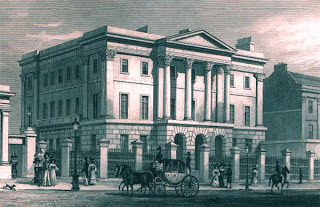
On a recent visit to London and finding ourselves close to Hyde Park Corner where I was enjoying watching the Household Cavalry, we came upon this wonderful eighteenth century house quite by chance.
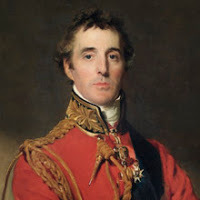
It was the home of the Duke of Wellington following his victory over Napoleon at Waterloo, and it seems to have changed very little since the days of the Iron Duke.
There's a statue of Napoleon, a fine art collection with paintings by Velazquez and Rubens, and an amazing collection of silver and porcelain.
The house is delightful and full of interest but best of all I loved the Waterloo Gallery where splendid balls used to be held. I could imagine the room packed with the very echelons of society, ladies in their pretty pastel gowns, the gallants in their smart uniform, footmen moving between them offering champagne.
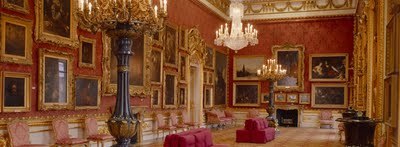
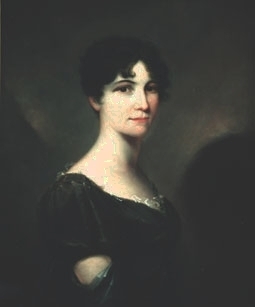 Harriet Arbuthnot (1793 –1834) a close friend of the Duke, often acted as hostess for these splendid events. She was rumoured to be the mistress of the Duke of the Wellington, although this is disputed. It was said that he enjoyed his relationship with Mrs Arbuthnot because he found in her "the comfort and happiness his wife could not give him." They were certainly close and she frequently hosted his dinner parties as his marriage wa, apparently, a cold one, his wife residing mainly in the country. Earlier, Harriet had been very friendly with Lord Castlereagh, calling him her "dearest and best friend" until his death in 1822.
Harriet Arbuthnot (1793 –1834) a close friend of the Duke, often acted as hostess for these splendid events. She was rumoured to be the mistress of the Duke of the Wellington, although this is disputed. It was said that he enjoyed his relationship with Mrs Arbuthnot because he found in her "the comfort and happiness his wife could not give him." They were certainly close and she frequently hosted his dinner parties as his marriage wa, apparently, a cold one, his wife residing mainly in the country. Earlier, Harriet had been very friendly with Lord Castlereagh, calling him her "dearest and best friend" until his death in 1822.Married to Charles Arbuthnot, a politician who was also a great friend of Wellington, we can only speculate whether the friendship was indeed innocent or a ménage à trois? She was certainly a noted society lady in a perfect position to comment upon events, and became a noted diarist. Her observations and memories of life within the British establishment were full of gossip and detail, finally published in 1950 as The Journal of Mrs Arbuthnot. A rich and useful source for any fan of early nineteenth century London. She sounds such a fascinating woman that I'd like to know more about her. But do call at Number One, London. Apsley House is most definitely worth a visit.
Published on May 14, 2011 01:00
April 20, 2011
Canterbury Tart
Canterbury Tart is one of our favourite recipes. Easy to make and delicious.
The pastry:
100g chilled butter, cubed
225g plain white flour
25g icing sugar, sifted
1 egg, beaten
Filling:
4 eggs
225g caster sugar
grated rind and juice of 2 lemons
100g butter, melted.
2 large cooking apples, peeled, cored.
1 or 2 Granny Smith apples (or similar dessert variety)
25g demerara sugar
Method:
Make the pastry and put in fridge to rest for 30 minutes.
Roll out pastry on a lightly floured board. Line a flan tin 10 1/2 inches by 1 1/2 in deep, prick all over with a fork, then return to fridge.
To prepare the filling: beat the eggs, sugar, lemon rind and juice together in a large mixing bowl. Stir in the warm melted butter, then coarsely grate the cooking apples directly into the mixture and mix well
Slice the dessert apples.
Spread the lemon mixture over the pastry base of the flan. Level the surface with the back of a spoon and arrange the dessert apple slices around the outside edge, neatly overlapping. Sprinkle the apple slices with a little demorara sugar.
Bake for about 40 - 50 minutes, 180 degrees for first 10-15 mins, then turn down to 150 degrees. Centre should feel firm to the touch and the apple slices tinged brown.
Serve warm with cream or ice cream.
Enjoy!
The pastry:
100g chilled butter, cubed
225g plain white flour
25g icing sugar, sifted
1 egg, beaten
Filling:
4 eggs
225g caster sugar
grated rind and juice of 2 lemons
100g butter, melted.
2 large cooking apples, peeled, cored.
1 or 2 Granny Smith apples (or similar dessert variety)
25g demerara sugar
Method:
Make the pastry and put in fridge to rest for 30 minutes.
Roll out pastry on a lightly floured board. Line a flan tin 10 1/2 inches by 1 1/2 in deep, prick all over with a fork, then return to fridge.
To prepare the filling: beat the eggs, sugar, lemon rind and juice together in a large mixing bowl. Stir in the warm melted butter, then coarsely grate the cooking apples directly into the mixture and mix well
Slice the dessert apples.
Spread the lemon mixture over the pastry base of the flan. Level the surface with the back of a spoon and arrange the dessert apple slices around the outside edge, neatly overlapping. Sprinkle the apple slices with a little demorara sugar.
Bake for about 40 - 50 minutes, 180 degrees for first 10-15 mins, then turn down to 150 degrees. Centre should feel firm to the touch and the apple slices tinged brown.
Serve warm with cream or ice cream.
Enjoy!
Published on April 20, 2011 01:35
April 1, 2011
York Writing Festival
 I've recently returned from an excellent weekend at the Festival of Writing Conference, York. It was inspiring, informative and stimulating, with some excellent speakers, and it was good to talk to people who were writing something other than romantic fiction. It began with a networking session where everyone had the chance to get to know a few of the 250 delegates by chatting to them in a relaxed way over a glass of wine. Most enjoyable. Later that evening some brave souls read an extract from their work in progress which was then commented on by a member of a panel, and later the audience voted. Scary stuff.
I've recently returned from an excellent weekend at the Festival of Writing Conference, York. It was inspiring, informative and stimulating, with some excellent speakers, and it was good to talk to people who were writing something other than romantic fiction. It began with a networking session where everyone had the chance to get to know a few of the 250 delegates by chatting to them in a relaxed way over a glass of wine. Most enjoyable. Later that evening some brave souls read an extract from their work in progress which was then commented on by a member of a panel, and later the audience voted. Scary stuff.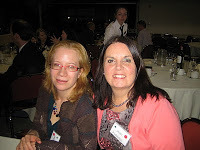 One of my favourite talks was given by Tom Tivnan, features editor of the Bookseller who spoke about the state of the publishing industry, looking at how we arrived at the current situation and the challenge presented by online retailers and ebooks. Most interesting and thought-provoking. Donna Condon from Piatkus spoke about what she was looking for, warning how difficult it is to get published so your work has to be original and perfectly presented. She managed to do this without being too doom and gloom. Quite an achievement. Emma Darwin had us all trying out different writer's voices, which was fun and very useful. Jean Fullerton, seen right with Kate Allen one of the organisers, gave an excellent talk on Show don't Tell.
One of my favourite talks was given by Tom Tivnan, features editor of the Bookseller who spoke about the state of the publishing industry, looking at how we arrived at the current situation and the challenge presented by online retailers and ebooks. Most interesting and thought-provoking. Donna Condon from Piatkus spoke about what she was looking for, warning how difficult it is to get published so your work has to be original and perfectly presented. She managed to do this without being too doom and gloom. Quite an achievement. Emma Darwin had us all trying out different writer's voices, which was fun and very useful. Jean Fullerton, seen right with Kate Allen one of the organisers, gave an excellent talk on Show don't Tell.Other speakers included literary agent Carole Blake, Lyn Vernham from Choc Lit, Jane Holland from Embrace, Ed Handyside from Myrmidon Books, Beverley Birch from Hodder Childrens, Patrick-Janson Smith from Harper Collins, Louise Allan, Penny Legg, Julia Churchill and many others. As always I wanted to go to two talks at once, but on the whole felt I made good choices.
David Nobbs (Reggie Perrin and A Bit of a Do) launched the conference with an inspiring and entertaining talk on the ups and downs of his writing life. He told us frankly about his failures as well as his successes, punctuated with many tips on how to avoid those mistakes ourselves. Well into his 70s he is still writing novels and clearly loving every minute.
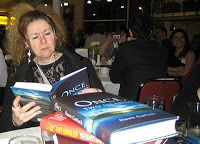 We were given the usual goodie bag, plus more books at the gala dinner. Here is Christine Courtney (Trade Winds) enjoying a browse.
We were given the usual goodie bag, plus more books at the gala dinner. Here is Christine Courtney (Trade Winds) enjoying a browse. Kate Williams, author of Becoming Queen (televised as the Young Victoria) drew the short straw by being the last speaker on Sunday afternoon. Many people had by then left in order to catch their train, which was a pity as only half the delegates were left to hear her. Nevertheless, I'm glad I didn't miss her talk as she was an interesting and accomplished speaker. I'm now thoroughly enjoying reading this fascinating biography, which of course I got her to sign.
Would I go again to the York Festival? I will indeed. Extremely well organised by Harry Bingham, it attracts some of the top names in the business, both published and aspiring writers of all types, and even the food was good.
Published on April 01, 2011 03:29
March 3, 2011
House of Angels
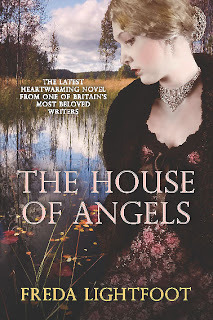 Sagas often touch on difficult subjects, in this case abuse. The three Angel sisters are ruled by a devil of a father, and the story tells how they overcome the damage such abuse inflicts. It is not always easy to write such scenes yet from the emails I get, they often touch a chord. Anyone who has ever suffered abuse, whether as a child or bullying in school, in a violent marriage, or even in the work place, will appreciate how the first thing you lose is self-esteem. You are demeaned, humiliated, debased and shamed so that you come to hate yourself. This is a deliberate ploy on the part of the abuser as it puts the power in his hand.
Sagas often touch on difficult subjects, in this case abuse. The three Angel sisters are ruled by a devil of a father, and the story tells how they overcome the damage such abuse inflicts. It is not always easy to write such scenes yet from the emails I get, they often touch a chord. Anyone who has ever suffered abuse, whether as a child or bullying in school, in a violent marriage, or even in the work place, will appreciate how the first thing you lose is self-esteem. You are demeaned, humiliated, debased and shamed so that you come to hate yourself. This is a deliberate ploy on the part of the abuser as it puts the power in his hand. The abusive mentality makes certain their victim is allowed no control over their own life, no rights, not even to be angry or upset. There is a power in anger, and he, or she, as many of the worst abusers are women, claim full rights to that emotion. He is allowed to shout and criticise, to find fault and complain, but the victim is expected only to obey. The abuser also twists everything to suit himself, so that he is always right and the victim wrong. He has unrealistic expectations and if he doesn't achieve them then he looks for someone to blame other than himself. An abuser is not generally a good listener, as he likes to ridicule, and arrogantly put down others to make himself feel good. Abusers are demanding, seeing themselves as the centre of the universe, and the victim their slave. They are intolerant and have to win every argument. The abuse may be mental in the form of name calling and insults, refusing to speak to or acknowledge a person, a withdrawal of love or praise, or to never be satisfied with the victim's efforts at school or work, cooking a meal or whatever. Abuse is about power, control, and entitlement.
But no one is entitled to abuse another.
So how do you deal with it? First, as with the Angel sisters, you have to accept that it is happening, and then seek help. Someone, whether your teacher, mother, best friend, doctor or even the police, needs to be told.
Each of my characters are compliant to a degree, but react in different ways. Ella rebels secretly but is then forced into a marriage she does not want, Livia is openly defiant, but protective of both her sisters. Maggie is far too timid and suffers the consequences. But then another daughter unexpectedly appears on the scene, and her attitude towards this father who abandoned her is entirely different…
The Story...
The three Angel sisters live in a large Victorian mansion in the English Lake District. Josiah Angel, their bully of a father, looks upon his daughters as pawns to expand his empire.
The beautiful Kentmere Valley today.
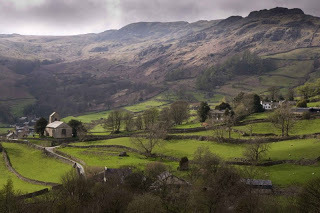 Empty-headed, spoiled Ella is married off to a non-conformist farmer with three children in need of a mother. Amos Todd proves to be a cold, unfeeling man irrationally obsessed with cleanliness, who sees sex as wicked and women as Jezebels. But the beauty of Kentmere gradually seeps into her heart. Can she make a life for herself in the dale?
Empty-headed, spoiled Ella is married off to a non-conformist farmer with three children in need of a mother. Amos Todd proves to be a cold, unfeeling man irrationally obsessed with cleanliness, who sees sex as wicked and women as Jezebels. But the beauty of Kentmere gradually seeps into her heart. Can she make a life for herself in the dale? Livia is the eldest and most spirited of the three, and feels she must protect her more timid sisters. She longs to be a modern woman and work in the family store, but Josiah forbids that, but she can't help falling in love with Jack Flint, a man untroubled by rules and convention who has already caused her father problems by inciting riots among his tenants.
The youngest daughter, practical, sensible Maggie is expected to keep house for her father with no hope of marriage, although she longs for escape even more than her sisters.
Mercy Simpson lives in the stews of Fellside in Kendal with her mother Florrie, a linsey hand loom weaver in the last throes of consumption. With her mother's dying breath she learns that her father is none other than Josiah Angel, owner of the town's fine department store. Florrie urges her daughter to seek employment there. But when Mercy presents herself before him, she learns how very ruthless Josiah Angel can be.
The Angel sisters need all their courage to escape the control of a brutal father, deal with the results of his abuse, and attempt to forge new lives for themselves.
A view of Kendal as it is today.
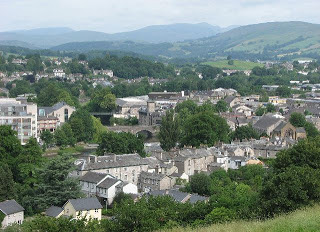
Here is a reader review.
This is the first book by Freda Lightfoot I have read and, despite the fact that I am not a lover of sagas, I was engaged with the story from page one. She piles horror on horror – rape, torture, sexual humiliation, incest, suicide - but she keeps you reading! The story of the Angel sisters, the novel is set in the Lake District in 1908, the title referring to the high-class department store their father owns. A tyrant, he successfully marries off one of his legitimate daughters so he can gain a plot of land he wants to build on. When his illegitimate daughter comes to him for help after her mother has died, however, he has her taken to the workhouse as, far from being of use to him, she is a threat to his standing in the town. Another daughter defies him, refusing to give up the working-class man she loves, while his youngest remains at home, hating him but unable to escape. How each of these four women cope with the life their father has forced on them, makes for page-turning reading, and I am sure that this novel will become yet another bestseller for Lightfoot.
Jay Dixon
Out 7 March as an ebook on Amazon
Published on March 03, 2011 06:05
February 17, 2011
The Bobbin Girls
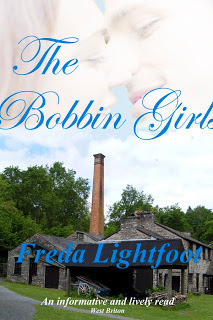 The Bobbin Girls is one of my favourite historical sagas. It did well in print and is now available from Amazon, Apple, Kobo, Smashwords etc., as an ebook.
The Bobbin Girls is one of my favourite historical sagas. It did well in print and is now available from Amazon, Apple, Kobo, Smashwords etc., as an ebook.It was a joy to revisit it for editing purposes, as I'd largely forgotten it. And quite a learning curve to make covers in Photoshop and publish it, but well worth the effort.
It's the story of a powerful young love blighted by a dark secret from the past which might, or might not, be true. I remember that I loved doing the research as I found such marvellous people to interview. The late Bill Hogarth, who spent hours taking me through Grizedale Forest teaching me the tricks of his trade on coppicing, making hurdles and swill baskets. Stan Crabtree and Bill Grant also enlightened and entertained me on the skills of forestry.
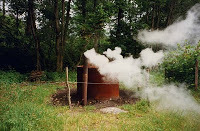 Even the charcoal maker patiently explained his craft to me.
Even the charcoal maker patiently explained his craft to me. Most of all I loved the evening I spent with the 'Bobbin Girls.' Eileen Thompson, Joyce Wilson and Pat Hogarth regaled me with their yarns and the wonderful tricks they played on each other: the vermin in the wood shavings, the mouse in the lunch box. They carefully described all that was involved in the making of bobbins, a skill I would not wish to try considering the hidden difficulties and dangers. It was said that you could always recognise a bobbin maker as he/she had a digit missing! I take my hat off to them. But this is a romance, so of course, there is a happy ending.
Most of all I loved the evening I spent with the 'Bobbin Girls.' Eileen Thompson, Joyce Wilson and Pat Hogarth regaled me with their yarns and the wonderful tricks they played on each other: the vermin in the wood shavings, the mouse in the lunch box. They carefully described all that was involved in the making of bobbins, a skill I would not wish to try considering the hidden difficulties and dangers. It was said that you could always recognise a bobbin maker as he/she had a digit missing! I take my hat off to them. But this is a romance, so of course, there is a happy ending.The Story:
Alena Townsen, a fiery tomboy from a large, happy family, wants nothing more than to spend the rest of her life with her childhood friend, Rob, the only son of James Hollinthwaite, a wealthy landowner. Hollinthwaite, however, has other ideas and when he forces the two to part Rob is sent away to school while Alena must start work in the local bobbin mill. Life is hard and her love for Rob severely tested. Torn between two men, her indecision is heightened by the knowledge of a tragic secret. Dolly Sutton has problems of a more intimate nature, while shy and unassuming, Sandra Myers finds herself an unlikely campaigner against Hollinthwaite's destructive plans for the village when he ruthlessly sacks the man she loves.
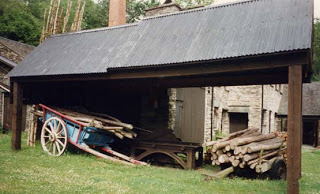
You can find it on Amazon by clicking here: The Bobbin Girls
Published on February 17, 2011 09:06
January 27, 2011
Fashion in the Sixteenth Century French Court
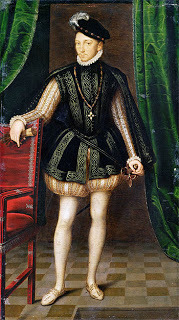
Living at court was expensive. Henry III demanded high standards of dress from his courtiers, and from his mignons. It was a requirement that every gentleman must possess at least thirty suits, the jacket short and pointed, and never wear the same clothes two days running. These must be of the finest silks and satins and bright of colour. The cloak or mantle must be placed just so over one shoulder, and allowed to fall from the other. One sleeve of the doublet should be worn loose at the wrist, and the other tightly buttoned. When on horseback, cavaliers were expected to ride with a drawn sword in their hand. Gloves of scented leather were popular, and Henri's mignons favoured the tall ruff, so stiff that it crackled, a fashion which soon became the object of much satire and caricature.
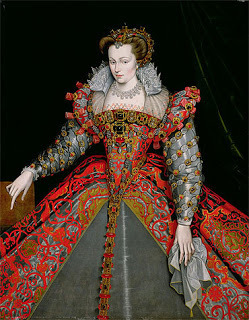 Ladies wore the skirts of their dresses open in front to display a richly coloured petticoat. The sleeves were full and often attached separately, and the gown cut daringly low in the neck. It was the fashion to wear a blond peruke, which Margot would do on grand occasions, atop which would be a cap adorned with plumes and jewels. More often she wore her dark hair naturally curled down her back.
Ladies wore the skirts of their dresses open in front to display a richly coloured petticoat. The sleeves were full and often attached separately, and the gown cut daringly low in the neck. It was the fashion to wear a blond peruke, which Margot would do on grand occasions, atop which would be a cap adorned with plumes and jewels. More often she wore her dark hair naturally curled down her back.Catherine de Medici had introduced the fashion of ruffs, but in her later years it was her daughter Marguerite de Valois who was considered the leader of fashion.
This is a description of her in my book Hostage Queen (paperback out now) as she prepares to meet the Portuguese ambassadors who have come to consider her as a possible bride for their King.
Pride and fear of the Queen Mother ensured that Margot look her best for the ambassadors. She bathed in warm scented rose oil, and Madame de Curton patted her dry before smoothing more fragrant unguents over her soft skin. The law strictly forbade any artisan or common bourgeoise to wear silk, which was permitted only for those of noble birth as it signified social prominence and power. Margot's own chemise and petticoats were of the finest, costing more than some people earned in an entire year, as was her boned corset that cinched in her tiny waist, and the high lace edged collar that framed her beautiful face and her lovely bosom, so firm and white it billowed delightfully above the neck of her gown. The mere sight of it was meant to entice Guise to kiss it.
It was for him that she dressed this evening, her would-be lover whom she wished to impress, not the Portuguese ambassadors.
Margot had a natural talent for style and was already becoming a leader of fashion at her brother's court. She knew how to adapt a gown, a dainty cap or ornament into something charming and desirable. The ladies and maids of honour would emulate the design, hoping to borrow some of the wearer's beauty.
Her gown this evening was of cloth of crinkled gold tissue, the richest and most costly in her wardrobe. Diamond pendants in the shape of stars hung at her ears and adorned her throat. Her hair, which was dark and not considered to be a fashionable colour, suited her perfectly, enhancing her chestnut eyes. She had Madame de Curton twist and curl and arrange it high upon her head in the style favoured by her beloved late sister, the Queen of Spain. A touch of colour to her cheeks and lips and lashes, and she was ready.
Margot, however, was very nearly eclipsed by the dazzling magnificence of her own brother. Anjou was resplendent in a doublet and hose in a delicate leaf green, threaded with gold and silver, a white lace ruff of immense proportions about his slender neck. His dark hair was brushed up into curls behind his cap, and he smelled divinely of violet water.
The Portuguese ambassadors marvelled at the sight of such a fop, seeming more Italian than French with his olive skin and long eyes, and so very effeminate. He had clearly taken as much trouble over his toilette as many of the ladies.
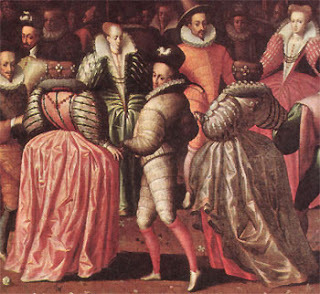
His favourites, or mignons as they were called, loved adornment, and happily advised the valets, or made comments as the King's hair was curled with hot tongues till it smoked with the heat, then dusted with violet scented powder. One plucked his eyebrows, leaving a clearly defined arc above each elongated eye, while another prepared a paste of rose water and cypress oil to apply to his cheeks, forehead, and neck. Last of all, the chief valet knelt before the King, gently tugged on his beard to open his mouth, then after rubbing a white powder on to his gums, took some false teeth from a tiny cedar wood box and fitted each one wherever there was a space. With his beard washed with perfumed soap and water, and neatly brushed, Henri was at last ready.
In the court of sixteenth century France, style was everything.

Published on January 27, 2011 04:40
Fashion in the Sixteenth Century French Court
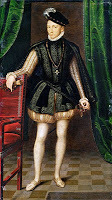 Living at court was expensive. Henry III demanded high standards of dress from his courtiers, and from his mignons. It was a requirement that every gentleman must possess at least thirty suits, the jacket short and pointed, and never wear the same clothes two days running. These must be of the finest silks and satins and bright of colour. The cloak or mantle must be placed just so over one shoulder, and allowed to fall from the other. One sleeve of the doublet should be worn loose at the wrist, and the other tightly buttoned. When on horseback, cavaliers were expected to ride with a drawn sword in their hand. Gloves of scented leather were popular, and Henri's mignons favoured the tall ruff, so stiff that it crackled, a fashion which soon became the object of much satire and caricature.
Living at court was expensive. Henry III demanded high standards of dress from his courtiers, and from his mignons. It was a requirement that every gentleman must possess at least thirty suits, the jacket short and pointed, and never wear the same clothes two days running. These must be of the finest silks and satins and bright of colour. The cloak or mantle must be placed just so over one shoulder, and allowed to fall from the other. One sleeve of the doublet should be worn loose at the wrist, and the other tightly buttoned. When on horseback, cavaliers were expected to ride with a drawn sword in their hand. Gloves of scented leather were popular, and Henri's mignons favoured the tall ruff, so stiff that it crackled, a fashion which soon became the object of much satire and caricature. Ladies wore the skirts of their dresses open in front to display a richly coloured petticoat. The sleeves were full and often attached separately, and the gown cut daringly low in the neck. It was the fashion to wear a blond peruke, which Margot would do on grand occasions, atop which would be a cap adorned with plumes and jewels. More often she wore her dark hair naturally curled down her back.
Ladies wore the skirts of their dresses open in front to display a richly coloured petticoat. The sleeves were full and often attached separately, and the gown cut daringly low in the neck. It was the fashion to wear a blond peruke, which Margot would do on grand occasions, atop which would be a cap adorned with plumes and jewels. More often she wore her dark hair naturally curled down her back.Catherine de Medici had introduced the fashion of ruffs, but in her later years it was her daughter Marguerite de Valois who was considered the leader of fashion.
This is a description of her in my book Hostage Queen (paperback out now) as she prepares to meet the Portuguese ambassadors who have come to consider her as a possible bride for their King.
Pride and fear of the Queen Mother ensured that Margot look her best for the ambassadors. She bathed in warm scented rose oil, and Madame de Curton patted her dry before smoothing more fragrant unguents over her soft skin. The law strictly forbade any artisan or common bourgeoise to wear silk, which was permitted only for those of noble birth as it signified social prominence and power. Margot's own chemise and petticoats were of the finest, costing more than some people earned in an entire year, as was her boned corset that cinched in her tiny waist, and the high lace edged collar that framed her beautiful face and her lovely bosom, so firm and white it billowed delightfully above the neck of her gown. The mere sight of it was meant to entice Guise to kiss it.
It was for him that she dressed this evening, her would-be lover whom she wished to impress, not the Portuguese ambassadors.
Margot had a natural talent for style and was already becoming a leader of fashion at her brother's court. She knew how to adapt a gown, a dainty cap or ornament into something charming and desirable. The ladies and maids of honour would emulate the design, hoping to borrow some of the wearer's beauty.
Her gown this evening was of cloth of crinkled gold tissue, the richest and most costly in her wardrobe. Diamond pendants in the shape of stars hung at her ears and adorned her throat. Her hair, which was dark and not considered to be a fashionable colour, suited her perfectly, enhancing her chestnut eyes. She had Madame de Curton twist and curl and arrange it high upon her head in the style favoured by her beloved late sister, the Queen of Spain. A touch of colour to her cheeks and lips and lashes, and she was ready.
Margot, however, was very nearly eclipsed by the dazzling magnificence of her own brother. Anjou was resplendent in a doublet and hose in a delicate leaf green, threaded with gold and silver, a white lace ruff of immense proportions about his slender neck. His dark hair was brushed up into curls behind his cap, and he smelled divinely of violet water.
The Portuguese ambassadors marvelled at the sight of such a fop, seeming more Italian than French with his olive skin and long eyes, and so very effeminate. He had clearly taken as much trouble over his toilette as many of the ladies.

His favourites, or mignons as they were called, loved adornment, and happily advised the valets, or made comments as the King's hair was curled with hot tongues till it smoked with the heat, then dusted with violet scented powder. One plucked his eyebrows, leaving a clearly defined arc above each elongated eye, while another prepared a paste of rose water and cypress oil to apply to his cheeks, forehead, and neck. Last of all, the chief valet knelt before the King, gently tugged on his beard to open his mouth, then after rubbing a white powder on to his gums, took some false teeth from a tiny cedar wood box and fitted each one wherever there was a space. With his beard washed with perfumed soap and water, and neatly brushed, Henri was at last ready.
In the court of sixteenth century France, style was everything.
Published on January 27, 2011 04:40
January 4, 2011
Gibraltar
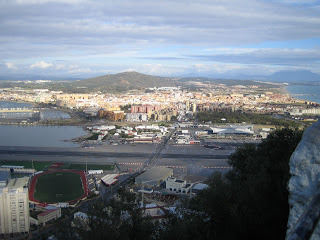 'Drive across the runway but remember to give right of way to aircraft.'
'Drive across the runway but remember to give right of way to aircraft.'We'd decided to drive down to Gibraltar for a few days break, and these were the directions for crossing over to the Rock from Spain. We certainly weren't going to argue with a 747. Caught in a traffic jam it took us an hour before we reached customs and they just waved us through. Where all the cars went after that I've no idea as it really is a quiet little town with narrow streets, and very much one foot in the past.
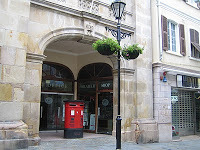
Gibraltar is very much a place with an identity crisis: Spanish houses with their pretty iron balconies abutting Palladian architecture. A Victorian police station, red telephone boxes, the Royal Mail, and policemen in English uniforms speaking Spanish.
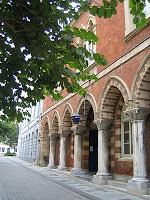
Irish pubs, Macdonalds and Pizza Hut, tapas bars and smart marina restaurants. M & S, Next and Dorothy Perkins opposite Moroccan silk shops and expensive Spanish jewellers. It's all here, just take your pick. And whatever you buy can be paid for in euros or sterling.
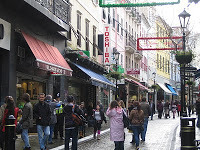 I have to say the weather was not good. In what might be termed our taste of Britain weekend we weren't banking on the rain too, but yes, it absolutely threw it down all Friday and much of Saturday. Undaunted we had a great time.
I have to say the weather was not good. In what might be termed our taste of Britain weekend we weren't banking on the rain too, but yes, it absolutely threw it down all Friday and much of Saturday. Undaunted we had a great time.On New Year's Eve we ate at 14 On the Quay, a smart restaurant on Queensway Quay. I had melon followed by rib eye steak while David had prawns then beef strogonoff. The food was excellent and reasonably priced. We might have stayed on for desert and cava but an unnecessarily loud disco started up next door, so we bailed out. We returned to our hotel in time to watch a selection of magnificent firework display from our balcony, all going on at once from different roof tops as well as the waterfront, as if vying with each other for excellence. Most impressive.
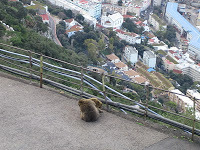 New Year's Day, a Saturday, was closed. Yes, all shops and tourist attractions on Gibraltar were closed due to holidays. This happens throughout the year apparently, so if you visit please do avoid Sundays and bank holidays. We did manage to bribe a taxi driver to take us up the Rock, (426 metres high) and saw the apes, remembering not to feed them or go too near. There are several family groups, 300 animals in all, who are free to roam over the entire Rock.
New Year's Day, a Saturday, was closed. Yes, all shops and tourist attractions on Gibraltar were closed due to holidays. This happens throughout the year apparently, so if you visit please do avoid Sundays and bank holidays. We did manage to bribe a taxi driver to take us up the Rock, (426 metres high) and saw the apes, remembering not to feed them or go too near. There are several family groups, 300 animals in all, who are free to roam over the entire Rock.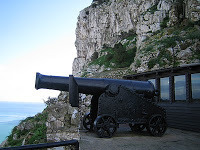
There are siege tunnels, and underground shelters which were used during the war, guns, a cave and various other tourist sites to be seen, when open.
And the views are panoramic over southern Spain. Absolutely magnificent.
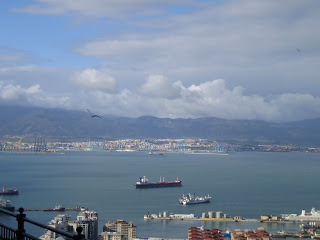 There's the naval base, of course, now much depleted, sailing trips out to see the dolphins diving; the Trafalgar war cemetery and I believe some beaches on the far side which we didn't explore. And if you do get rain there are cinemas and a museum for indoor entertainment. But there isn't much to do here, so a short break is probably all it deserves. Everyone should go to Gibraltar once in a lifetime. It's a fun experience, if only for those old red telephone boxes. But if you drive across, do watch out for Easyjet.
There's the naval base, of course, now much depleted, sailing trips out to see the dolphins diving; the Trafalgar war cemetery and I believe some beaches on the far side which we didn't explore. And if you do get rain there are cinemas and a museum for indoor entertainment. But there isn't much to do here, so a short break is probably all it deserves. Everyone should go to Gibraltar once in a lifetime. It's a fun experience, if only for those old red telephone boxes. But if you drive across, do watch out for Easyjet.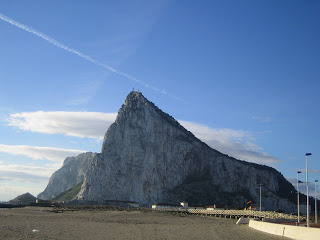
Published on January 04, 2011 07:08
December 21, 2010
Christmas in Spain
One of the joys of living in Spain is that there isn't the same commercial fuss made. Feliz Navidad will be up in twinkling lights, and pontsettias are everywhere, and yes, a few shops will be playing Jingle Bells and have a tree, but not to the same extent. Christmas itself is fairly low key.
The Nativity scene 'Nacimiento' can be seen in plazas in most small towns as well as many Spanish homes and shop windows, often rather splendid. Sometimes, on Christmas Eve there will be a live Nativity scene, with actors and actresses playing the parts of Mary and Joseph. Baby Jesus does not appear until the right time, and nor do the wise men.
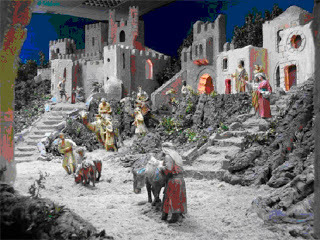
December 24, Christmas Eve
Nochebuena is when the main Christmas meal is taken, often roast lamb or suckling pig, a feast that takes place quite late, as in all Spanish fiestas, starting around 10 p.m. and going on until the small hours. Some families will sing carols around the nativity scene which remains without the baby until the stroke of midnight. Others go to midnight Mass 'La misa del Gallo', or 'Rooster Mass', so named after the bird who reputedly announced the birth of Christ. Many people, of course, like the rest of us, just watch the Christmas programme's on TV while enjoying the traditional Turrón (nougat), marzipan, or mantecas (a range of butter-based biscuits) with Cava.
January 6th, Three Kings Day
Traditionally Spanish children do not get their presents on Christmas Day from Santa Claus, or Papa Noel, as he is called. They have to wait until the Fiesta de Los Reyes. What we would call Epiphany. By now we're packing our Christmas decorations away, but the Spanish are still partying. The excitement starts in the late afternoon or early evening of January 5 when there is often a parade through the streets with camels, yes, real ones, carrying the three kings, Melchor, Gazpar and Baltasar, who throw sweets into the watching crowds. A custom that no doubt started in Moorish times. A whole procession of dancers and musicians, trailers and floats, will follow. It is truly a sight to see. The little girls dress up in their flamenco dresses, little boys as kings or drummer boys.They run alongside with their little bags catching gifts and sweets.
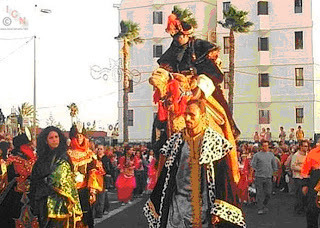
In the run up to the 6th of January children can meet the wise men at some department stores and tell them what they would like for Christmas, just as our children tell Santa Claus. On the 5th, the shops remain open until after midnight. Before going to bed the children leave their shoes on the door step so that the Kings will know who to leave presents for. Some Spanish families are starting to put presents under a Christmas tree, perhaps because there are too many to put in a shoe. And just as British children leave a mince pie and a drink for Santa and his reindeer, Spanish children also put out something to eat and drink for Melchor, Gaspar, and Baltazar, and water and grass for their camels. Well, they do have a lot of work to do that night.
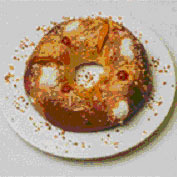 The children wake in great excitement the next morning to find their presents. For breakfast or after lunch, the family will eat the typical dessert of the day, the 'Roscón de los Reyes'. This is a large ring shaped cake or sweet bread that is decorated with candied fruits, symbolic of the emeralds and rubies that adorned the robes of the three kings, sometimes a gold paper crown is often provided to decorate the cake. Hidden inside it are surprises 'sorpresas'. The one who finds the lucky prize is King or Queen for the day while he who ends up with the unlucky bean is expected to pay for next years Kings' Cake – and they are not cheap!
The children wake in great excitement the next morning to find their presents. For breakfast or after lunch, the family will eat the typical dessert of the day, the 'Roscón de los Reyes'. This is a large ring shaped cake or sweet bread that is decorated with candied fruits, symbolic of the emeralds and rubies that adorned the robes of the three kings, sometimes a gold paper crown is often provided to decorate the cake. Hidden inside it are surprises 'sorpresas'. The one who finds the lucky prize is King or Queen for the day while he who ends up with the unlucky bean is expected to pay for next years Kings' Cake – and they are not cheap!
And so another day of feasting commences. January 7 is a very quiet day in Spain. No businesses open, everyone at home in recovery.
The Nativity scene 'Nacimiento' can be seen in plazas in most small towns as well as many Spanish homes and shop windows, often rather splendid. Sometimes, on Christmas Eve there will be a live Nativity scene, with actors and actresses playing the parts of Mary and Joseph. Baby Jesus does not appear until the right time, and nor do the wise men.

December 24, Christmas Eve
Nochebuena is when the main Christmas meal is taken, often roast lamb or suckling pig, a feast that takes place quite late, as in all Spanish fiestas, starting around 10 p.m. and going on until the small hours. Some families will sing carols around the nativity scene which remains without the baby until the stroke of midnight. Others go to midnight Mass 'La misa del Gallo', or 'Rooster Mass', so named after the bird who reputedly announced the birth of Christ. Many people, of course, like the rest of us, just watch the Christmas programme's on TV while enjoying the traditional Turrón (nougat), marzipan, or mantecas (a range of butter-based biscuits) with Cava.
January 6th, Three Kings Day
Traditionally Spanish children do not get their presents on Christmas Day from Santa Claus, or Papa Noel, as he is called. They have to wait until the Fiesta de Los Reyes. What we would call Epiphany. By now we're packing our Christmas decorations away, but the Spanish are still partying. The excitement starts in the late afternoon or early evening of January 5 when there is often a parade through the streets with camels, yes, real ones, carrying the three kings, Melchor, Gazpar and Baltasar, who throw sweets into the watching crowds. A custom that no doubt started in Moorish times. A whole procession of dancers and musicians, trailers and floats, will follow. It is truly a sight to see. The little girls dress up in their flamenco dresses, little boys as kings or drummer boys.They run alongside with their little bags catching gifts and sweets.

In the run up to the 6th of January children can meet the wise men at some department stores and tell them what they would like for Christmas, just as our children tell Santa Claus. On the 5th, the shops remain open until after midnight. Before going to bed the children leave their shoes on the door step so that the Kings will know who to leave presents for. Some Spanish families are starting to put presents under a Christmas tree, perhaps because there are too many to put in a shoe. And just as British children leave a mince pie and a drink for Santa and his reindeer, Spanish children also put out something to eat and drink for Melchor, Gaspar, and Baltazar, and water and grass for their camels. Well, they do have a lot of work to do that night.
 The children wake in great excitement the next morning to find their presents. For breakfast or after lunch, the family will eat the typical dessert of the day, the 'Roscón de los Reyes'. This is a large ring shaped cake or sweet bread that is decorated with candied fruits, symbolic of the emeralds and rubies that adorned the robes of the three kings, sometimes a gold paper crown is often provided to decorate the cake. Hidden inside it are surprises 'sorpresas'. The one who finds the lucky prize is King or Queen for the day while he who ends up with the unlucky bean is expected to pay for next years Kings' Cake – and they are not cheap!
The children wake in great excitement the next morning to find their presents. For breakfast or after lunch, the family will eat the typical dessert of the day, the 'Roscón de los Reyes'. This is a large ring shaped cake or sweet bread that is decorated with candied fruits, symbolic of the emeralds and rubies that adorned the robes of the three kings, sometimes a gold paper crown is often provided to decorate the cake. Hidden inside it are surprises 'sorpresas'. The one who finds the lucky prize is King or Queen for the day while he who ends up with the unlucky bean is expected to pay for next years Kings' Cake – and they are not cheap! And so another day of feasting commences. January 7 is a very quiet day in Spain. No businesses open, everyone at home in recovery.
Published on December 21, 2010 04:05
November 24, 2010
ebooks and the Kindle
It's 3 months now since I put some of my back list up on Kindle and I must say I'm delighted with the results so far. Each month has improved on the one before, and I'm hoping for a real boost after Christmas when Santa has delivered many more Kindles. These ebooks are also available on most other devices including Sony ereader, the Nook and ipad, either bought through Amazon, Barnes & Noble, Kobo, etc., thanks to the one stop shop of Smashwords. You'll find the links to these places on my website.
The latest book to go up is Hostage Queen at £6.99 plus VAT, which you do get unfortunately on ebooks. You'll find it in Amazon Kindle Store. For those of you who prefer the paperback version, this will be in your shops, and on Amazon, before Christmas.
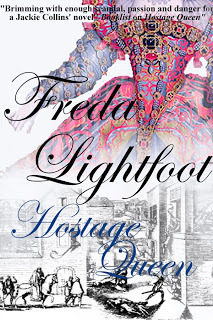
Another recent publication is Wine and Roses (also published as Madeiran Legacy, originally by Mills and Boon and later Severn House) now available on Regency Reads.
If you're a writer considering publishing your own ebooks, start here. Reading the Smashwords style guide is also a good idea. The best thing to do first is to save a copy of your document as an rtf file then put back the formatting of indents, 1.5 line spacing and so on by using the format/style button and rule on the toolbar. Don't us the tab key, and click the P thingy on the tool bar so that you can see what you're doing. A clean, code-free document is essential. Then check it out on MobiCreator before publishing. Yes, there's a bit more to it than this. Yes, it's takes time. And yes it's hard to get right the first time, and a bit scary, but once done, that's it. And it'll be a whole lot quicker the second time you try. Of course publishing your ebook is only half the story, making sure it doesn't disappear into obscurity is another blog altogether.
I've put 14 up so far and they're doing really well and finding me new readers. I've put Luckpenny Land, as the first in a series,up at £1.99 as a taster, and people are now coming back to read the rest of the series, which is encouraging.
Here are some of my others, although there are many more. All bestsellers in their day, and now being granted a new lease of life.
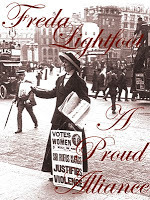
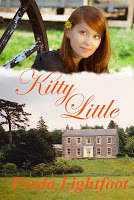
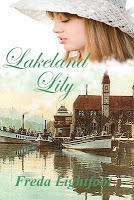
As for my own Kindle, I love it. I'm reading more and more and find it really easy to use, even in bright sunlight. I'm buying books that range in price from 99 pence or dollars upwards. Some are free or cheap offers for debut authors or a new series, which is good. I've also downloaded lots of free classics, some old favourites and some I've never got around to reading. I'm still buying print books but I'm stopping to think now if I will want to keep this book in a physical form, or just have the pleasure of reading it. And for those of you who like to lend their books to friends and family, Amazon are bringing in a new facility where you can lend an ebook a set number of times for a given period, say two weeks, during which time you cannot access it yourself. Sounds good, as this means my daughter and I can still swap books. My favourite recently was The Last Queen by C W Gortner. An excellent read. For a review of this book go to my reviews page on Goodreads and check it out.
Happy reading, and publishing.
The latest book to go up is Hostage Queen at £6.99 plus VAT, which you do get unfortunately on ebooks. You'll find it in Amazon Kindle Store. For those of you who prefer the paperback version, this will be in your shops, and on Amazon, before Christmas.

Another recent publication is Wine and Roses (also published as Madeiran Legacy, originally by Mills and Boon and later Severn House) now available on Regency Reads.
If you're a writer considering publishing your own ebooks, start here. Reading the Smashwords style guide is also a good idea. The best thing to do first is to save a copy of your document as an rtf file then put back the formatting of indents, 1.5 line spacing and so on by using the format/style button and rule on the toolbar. Don't us the tab key, and click the P thingy on the tool bar so that you can see what you're doing. A clean, code-free document is essential. Then check it out on MobiCreator before publishing. Yes, there's a bit more to it than this. Yes, it's takes time. And yes it's hard to get right the first time, and a bit scary, but once done, that's it. And it'll be a whole lot quicker the second time you try. Of course publishing your ebook is only half the story, making sure it doesn't disappear into obscurity is another blog altogether.
I've put 14 up so far and they're doing really well and finding me new readers. I've put Luckpenny Land, as the first in a series,up at £1.99 as a taster, and people are now coming back to read the rest of the series, which is encouraging.
Here are some of my others, although there are many more. All bestsellers in their day, and now being granted a new lease of life.



As for my own Kindle, I love it. I'm reading more and more and find it really easy to use, even in bright sunlight. I'm buying books that range in price from 99 pence or dollars upwards. Some are free or cheap offers for debut authors or a new series, which is good. I've also downloaded lots of free classics, some old favourites and some I've never got around to reading. I'm still buying print books but I'm stopping to think now if I will want to keep this book in a physical form, or just have the pleasure of reading it. And for those of you who like to lend their books to friends and family, Amazon are bringing in a new facility where you can lend an ebook a set number of times for a given period, say two weeks, during which time you cannot access it yourself. Sounds good, as this means my daughter and I can still swap books. My favourite recently was The Last Queen by C W Gortner. An excellent read. For a review of this book go to my reviews page on Goodreads and check it out.
Happy reading, and publishing.
Published on November 24, 2010 08:47
Freda Lightfoot's Blog
- Freda Lightfoot's profile
- 210 followers
Freda Lightfoot isn't a Goodreads Author
(yet),
but they
do have a blog,
so here are some recent posts imported from
their feed.



